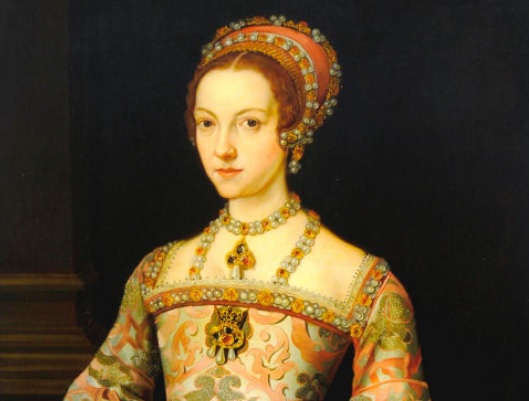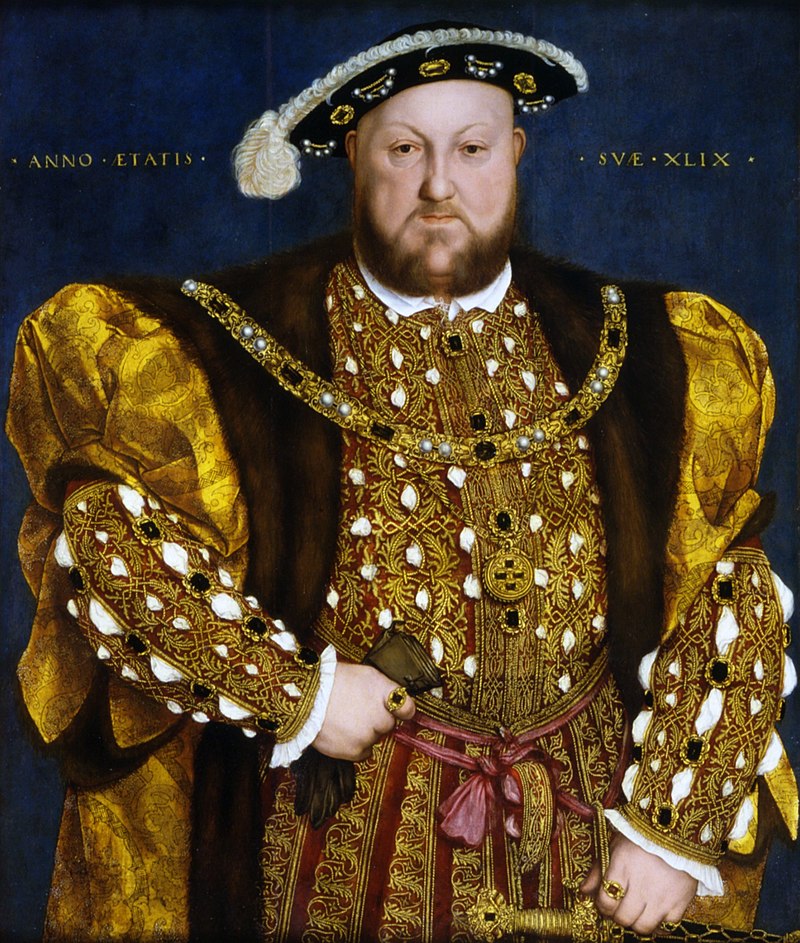
On a hot summer day in 1543, a young widow married an ageing and much wed king in a ceremony that took many by surprise. By the time Katherine Parr said ‘I do’ to Henry VIII in the Queen’s Closet at Hampton Court Palace on July 12th 1543, his five previous unions and attitude towards marital harmony were such that continental contenders to be consort of England were all but running in the opposite direction. It’s often stated that Katherine Parr had no option but to wed the king who had made tyranny everyday in the last part of his reign. But I think that’s far from the truth. For Katherine’s queenship showed her to be every bit as ambitious, capable and revolutionary as the man she married. And for that reason, Katherine Parr is Henry VIII’s most successful queen.
It’s not just the fact that she survived that makes me consider her to be the champion consort although outliving Henry was no mean feat. He had two of his wives executed, another died soon after childbirth while yet another faded away in serious ill health having been confined to a castle when she didn’t give him his own way. However, Katherine Parr herself came close to being given the chop by Henry. It’s just she talked him out of it and went on to outlive him. And that’s just the first indicator that wife number six is the real force to be reckoned with.
In fact, she was such a force that Henry left her in charge of his kingdom when he went off to France to try and recapture his youth in a final flourish of very minor continental warfare that fizzled out into a damp squib. Katherine Parr is the last queen consort of England to have been named the country’s regent. And Henry wasn’t in the habit of handing out that role. Not even the all conquering Anne Boleyn got to run his kingdom for him. Catherine of Aragon, daughter of monarchs and aunt of an emperor, was the only other wife trusted with this vital role.
But by the time she served as regent, in 1544, Katherine was a skilled politician and networker. Born the daughter of Sir Thomas Parr, a not terribly noble nobleman, and Maud Green, she had had to work for her position at court. Her mother had found her a steady, titled husband and promptly died only for Katherine to be widowed soon afterwards. She then used her links to obtain a match with a better connected man who then went and got himself into hot water during the religious and political upheavals of the 1530s, with Katherine taking on a lead role in keeping him and his family safe. By the time she found herself a widow again, in early 1543, she had reactivated her connections at court and had secured a place in the household of Henry VIII’s daughter, Mary. By early summer, she had caught the king’s fancy. On July 12th, she became Queen of England, a meteoric rise and mostly of her own making.

Historians spent centuries painting Henry’s sixth queen as a dull woman who seemed to take her greatest pleasure in wiping pus from her obese husband’s festering legs. The truth is much more interesting. Katherine embraced the role of consort and that of stepmother, bringing Henry’s two daughters, Mary and Elizabeth, back into their father’s care and back into the line of succession. She was also one of the best educated and most learned people of her age and her passion for knowledge became an inspiration for Elizabeth and for another young, royal relative, Lady Jane Grey.
Kateryn the Quene, as she liked to sign herself, also became the first woman in England to publish a book under her own name and in the English language when her Prayers or Meditations was put to print in 1545. And its title is an indicator of another of her much talked about talents. For Katherine Parr was a leading religious reformer. Passionate about Protestantism, she surrounded herself with a coterie of clever women and men who debated and dissected the expression of faith.
It was this that brought her close to suffering the same fate as Anne Boleyn and Catherine Howard. In 1546 her enemies, including the anti Protestant clergyman Stephen Gardiner, found the king tiring of her religious talk and persuaded him to sign a warrant for her arrest. Katherine somehow found out about the plan and ran to Henry, telling him she had only surrounded him with matters of faith so he could educate her and she could distract him from the pain of his ailments. When her opponents arrived with their guards to take her into custody, they were shouted away by the king while Katherine had the last laugh.
It was just one of her many successes as consort. Her marriage to the king lasted for three and a half years, his second longest, while on his death he declared that she should always retain the title and dignity of a Queen of England. She also retained extensive lands and money. The obscure country gentlewoman was now the most powerful in England.
Her glory was short lived. She married again and died after giving birth to her only child, on September 5 1548. And that’s when history went to work on her, resigning her to being a number on a very long list of royal wives and painting her as the plain nursemaid who became the mainstay of school history books for years.
The truth is far more interesting. Religious reformer, humanist, politician and, briefly, ruler of England. Katherine Parr was a force to be reckoned with and her story continues to fascinate.
Lydia Starbuck is a pen name of June Woolerton who has written extensively on royal history. Her book, The Mysterious Death of Katherine Parr, is available to pre-order now and is published on March 30th 2024. She is also the author of a popular cosy mystery, All Manner of Murder.

